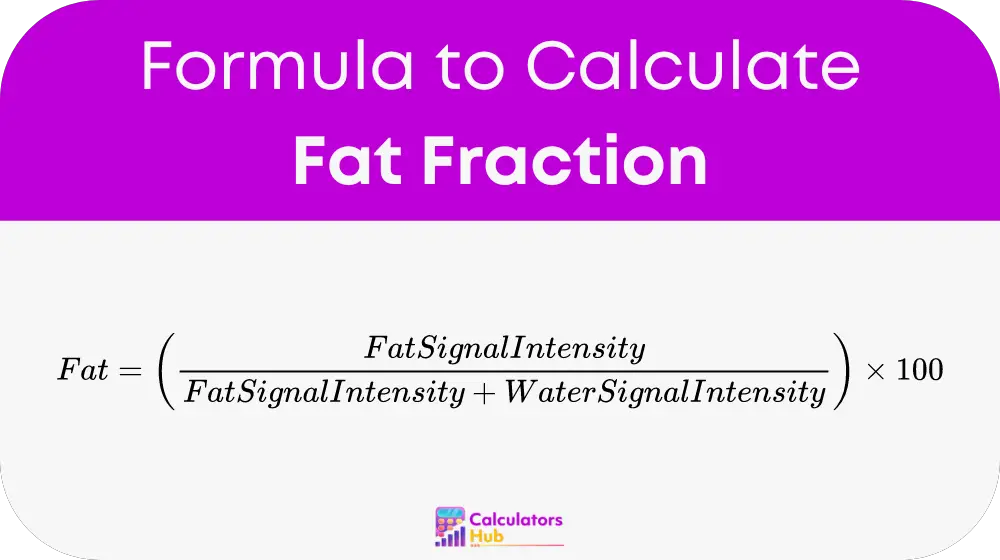The Fat Fraction Calculator measures the percentage of fat relative to the total tissue, primarily in clinical settings. It’s extensively used to quantify fat in liver tissues, a key indicator in diagnosing and managing conditions like non-alcoholic fatty liver disease (NAFLD) and cirrhosis. By providing accurate measurements, this tool plays a vital role in monitoring patient progress and response to treatment.
Formula of Fat Fraction Calculator
The cornerstone of the Fat Fraction Calculator is its formula:

Here’s a breakdown of its components:
- Fat Signal Intensity: This refers to the intensity of the signal received from fat tissues during an MRI scan.
- Water Signal Intensity: This represents the signal intensity from all non-fat tissues, primarily water.
Understanding these components is crucial for accurately interpreting the results from the calculator.
Table for General Use
| cenario | Fat Signal Intensity | Water Signal Intensity | Calculated Fat Fraction (%) |
|---|---|---|---|
| Normal Healthy Liver | 50 | 950 | 5% |
| Moderate Fatty Liver | 150 | 850 | 15% |
| Severe Fatty Liver | 300 | 700 | 30% |
| Healthy Muscle Tissue | 20 | 980 | 2% |
| Obese Adipose Tissue | 600 | 400 | 60% |
Example of Fat Fraction Calculator
Lets look at an example. Consider a patient undergoing MRI for liver fat assessment. The MRI results show a Fat Signal Intensity of 150 units and a Water Signal Intensity of 850 units. Using our formula:
Fat Fraction=(150 / 150+850) × 100% = 15%
This indicates a moderate level of fat in the liver, crucial for diagnosing fatty liver disease.
Most Common FAQs
Normal ranges vary depending on the tissue and the used imaging technique, but typically, a healthy liver should have a fat fraction under 5%.
Elevated fat fraction levels can indicate the presence of fatty diseases, guiding further diagnostic and treatment plans.